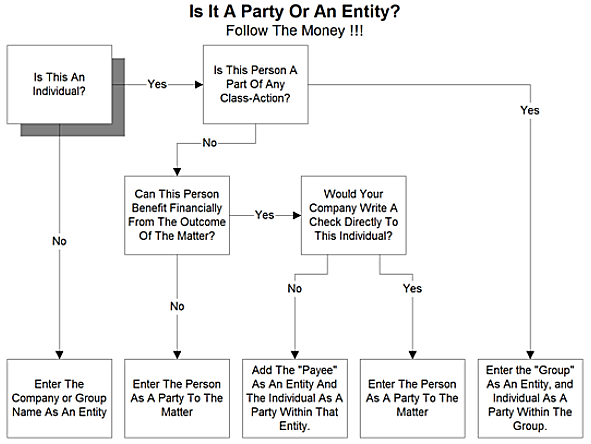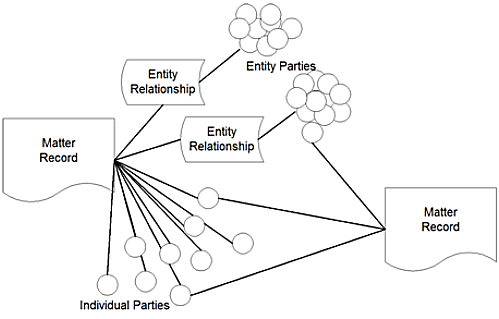Parties-Entities
The following flowchart illustrates the differences between a party and an entity.

Examples of Parties and Entities
The traditional use of parties within a Matter Management System pertains mainly to individuals associated to a matter who are neither part of the corporate structure nor the outside counsel or vendors who also have a direct relationship to that matter.
If John Smith, the individual, is involved with a claim or litigation against your company, he might be a "Party" to the matter.
If John Smith is a corporation (John Smith, Inc.) involved with a claim or litigation against your company, that corporation would be associated to the matter as an "Entity".
If John Smith is the CEO of your company, he would not be identified as a "Party" but rather as a corporate "Key Personnel".
If the person is involved with the matter in a position to gain financially for work or services performed, he would be an outside counsel or vendor.
The traditional requirements of assigning parties to a matter continue to be a function within Lawtrac, but we have introduced a two-tier "hierarchy" system to the parties: the first tier is referred to as "Entity"; the second tier is referred to as "Party".
Individual parties can be associated to a matter, and they can also be a part of an entity that is associated to another matter.
An Entity can be:
- An external company
- A subordinate company within the corporation using the Lawtrac application
- An identified class of litigants
A Party can be:
- A subordinate individual to an entity
- A subordinate individual to more than one entity
- An individual who can be associated to a Matter but who is not associated to an entity
Matter Relationships to Parties and Entities
When an entity is attached to a matter, subordinate parties are also attached, making their contact information available to all those working on the matter.
Parties are attached to a matter as individuals. An individual who is subordinate to an entity may be attached as an individual, at which point the association is one-to-one and will not involve the entity or other subordinates of any associated entity.


